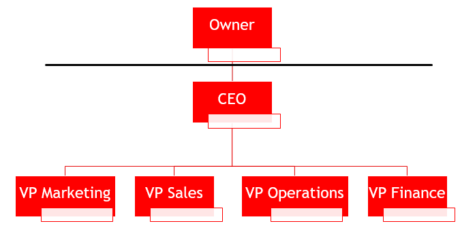This week I want to talk about how to build a business that lasts.
Your business should create value and produce profits for your shareholders no matter who is in charge, who sells the jobs or who sprays the jobs. This is how big businesses are built and run, and you can build this type of machine, too.
Whether we are talking about a multi-billion-dollar public company on the stock exchange or a one person start up, every company is structured the same way with owners, managers, marketing, sales, operations and administration.
It all starts with the shareholders, most commonly known as the owners. The owners take the risk to fund and create the business, and their returns are based on the success of the business.
From an ownership standpoint, most investors expect higher rates of return on riskier investments. For example, an investor would expect a better rate of return for funding a new startup business compared to an investment in Coca-Cola, an established, steady, profitable and lower risk investment.
The owners then must identify someone to lead the business. Whether they are called CEO or general manager, this person is the visionary, they should know how to plan, predict the future, “see around corners” and adjust for business affects that others do not anticipate. These people are paid the big bucks for masterminding the overall business, and in small companies, it is often the owner themselves because they are the in-house entrepreneur that got it all started.
The general manager is responsible for building a team that communicates to prospects, wins customers, exceeds customer’s expectations, organizes the company and manages cash flow.
Along with building this team, the general manager should develop systems and processes that work, regardless of the people involved, this removes the influences of people’s emotions from the business.
The division of skills, responsibilities and duties typically look like this:
- VP of Marketing or Marketing Manager – Knows how to find prospects
- VP of Sales or Sales Manager – Knows how to win new customers
- VP of Operations or Operations Manager – Knows how to do the activity of the business and fulfill customer’s expectations
- VP of Human Resources or HR Manager – Knows how to recruit talent, train and on-board new personnel
- CFO, VP of Finance or Controller – Knows how to manage cash flow, accounts receivable and accounts payable
Overall, the business structure generally looks like this:

By now, you might be thinking, “This isn’t for me, there is no way that I can hire all these people, I can’t afford it.”
The reality is that either your business can cover these responsibilities or it will not last. Now, this does not mean that you should run out and hire 5 new managers. Rather, it means that someone in your business must take on the responsibilities for each of these areas.
Like me, you probably wear multiple hats in your business.
When you are working a tradeshow, you are working in the marketing department, when you are meeting with a customer, you are working in the sales department and when you take an order or deliver the goods, you are working in the operations department.
If you are a one-man show, you may be responsible for all the activities in your business. The key is knowing who is responsible for what, tracking your responsibilities and actively planning time to work in all areas of the business.
Businesses that last are built with thought, they use separation of responsibilities, activity tracking and systems & processes to build the foundation for a long-lasting business.
Stay tuned next week as we continue to discuss the interesting world of spray foam insulation.
Click here to create your own Spray Foam Advisor account FREE and get access to videos & courses to improve your knowledge, build your skills and grow your business.



